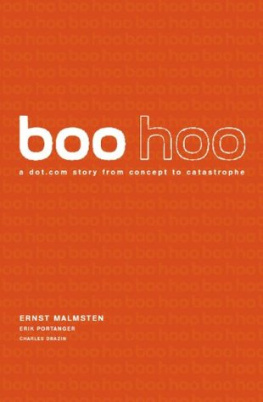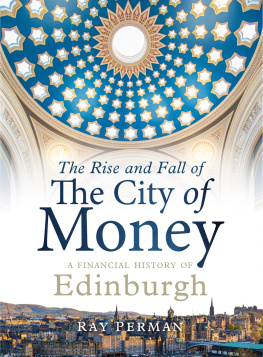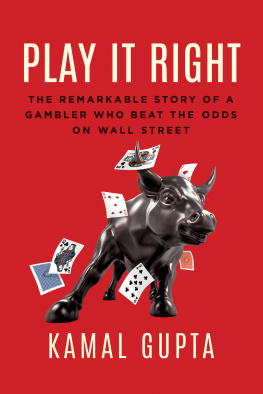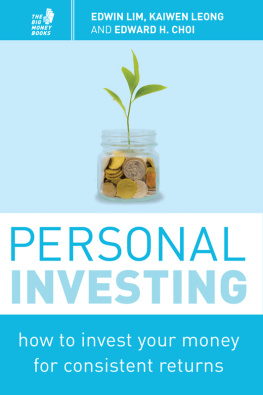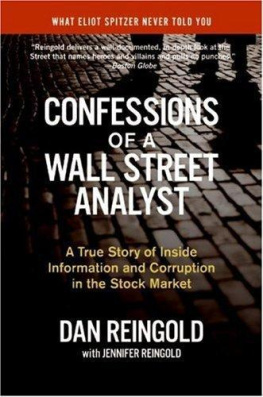Contents
Boo Hoo
$135 million, 18 months... a dot.com story from concept to catastrophe
Ernst Malmsten
Erik Portanger
Charles Drazin

To everyone who believed in boo
Preface
WHEN BOO COLLAPSED that fateful day in May almost a year and a half ago, I felt a strong urge to tell the story of its brief but intense life. By writing a book, I hoped to come to terms with the overwhelming sadness and emptiness that follows such a great loss. As a sort of therapy, I would work out what had gone wrong and what mistakes I had made. But there were also all those questions from close friends, relatives and just about everyone I met. Was it true? Did you really spend all that money? It was obvious that with just the newspaper accounts to depend on, some rather wild and fanciful ideas had been formed. boo had become a myth, a legend. People seemed to assume that all I did was party, meet beautiful girls, drink Krug and fly everywhere first class with my private chef and bodyguards.
While I was amused by this other self, I was even more concerned to set the record straight, to tell the true story as honestly as possible. So, I decided to write a book that would be not just a distanced reconstruction, but a personal account of boo from first inspiration to its bitter end. I wanted to record the events, but also to capture how I and everyone else involved in the boo story actually felt at the time.
Then, as around me other internet companies went bust and the legions of the dot-com dead swiftly grew, I began to realize that boo had a much broader significance. It could serve to capture all the fever, glamour and broken dreams of the dot.com era. As the first big casualty, boo was a convenient scapegoat, but our collapse was only part of a much larger story involving business people, the media, banks and individual investors.
It would have been natural to write the story with my co-founder Kajsa Leander, who had been my close partner in not only boo but also several other ventures over the last decade. But, while in every other way she gave what help she could, it was not possible because she had returned to Sweden and, what was more, had just given birth to her second child. So with some nervousness I set out on my own, receiving enormous encouragement and practical advice from my agent Lesley Shaw at Gillon Aitken Associates. Over the next year, whether it was negotiating with publishers, newspapers and film companies, or sorting out countless other problems, she proved to be an invaluable support.
As English is not my native tongue, I realized that I would have to find someone to help me and, after reading a piece about boo that Erik Portanger and a colleague had written in the Wall Street Journal, I invited him to be my collaborator. I was impressed by how well written and researched his piece had been. He was not only deeply familiar with the boo story, but also, as a writer for the Wall Street Journal, well placed to give the transatlantic perspective on what was always intended to be an international company. Together we wrote a proposal which Random House agreed to publish. Erik received extended leave from the Wall Street Journal and we began to work on the book in November 2000.
From the outset I had always wanted to give as full an account as possible, but I had under-estimated just how huge that task would be. boos existence may have been a brief one, but it touched many lives around the world. With tireless persistence, Erik undertook the time-consuming task of tracking them down and conducting often exhaustive interviews in an effort to recreate the many events, meetings and conversations as they actually happened. All together, he spoke to well over 200 people in the course of his research. But it was also a story that passed through many different areas from business and high finance to marketing, fashion and even poetry. It soon became clear that the six months we had originally allowed ourselves to tell this story was absurdly optimistic and that if we were to make our publication date we would need some extra resources.
So in May of this year, we asked film writer and editor Charles Drazin, who had by a lucky coincidence just finished writing his own
Prologue
boo.com, the online sportswear retailer, was on Tuesday night on the brink of collapse as attempts to secure additional funding from investors seemed doomed to failure.
People close to the company conceded that unless it secured the $30m of extra funding needed to take the business forward within 48 hours it would be forced to call in receivers.
If boo fails to win a last-minute reprieve, it will be the highest profile casualty among European e-tailing start-ups.
Financial Times, 17 May 2000
THE SHEET OF paper that has just been handed to me is covered with little yellow Post-Its. On each is scribbled a name and contact number, along with the media group they represent. Theres CNN, BBC, Le Figaro and just about every other broadsheet, tabloid, online news site and TV station you can think of. All the big ones, I say, lifting one of the Post-Its to reveal more numbers underneath. What do they want?
Dina Cholack, who heads up public relations for boo.com, looks exasperated. Ernst, she says, waving at the Financial Times spread across her desk. They all want to know if its true.
I leaked the story to the FT last night. Our investors needed to know that things really were serious this time. Right now, in a little room hidden away on the other side of our office in Londons Soho, boos co-founder Kajsa Leander and two of our senior managers are ringing around for money. Unless we raise $20 million by midnight boo.com is dead.
Just tell them nothing has been decided yet and dont answer the telephones any more.
Im trying to speak softly and to appear calm. Around Dinas desk, rows of young, casually dressed staff are tapping away at their computers with cool efficiency, but I sense their eyes on me, looking for hints of what the day will bring. Is he worried? Are things really that bad? After all, boos sales in just the past fortnight have already hit $500,000, compared with $1.1 million for the entire first quarter. The whole building is humming with the energy of a healthy, thriving business. On the far side of the office I can see dozens of people working on Version 2.0 of our website. Were looking to the future, trying to put boos reputation as the ultimate online shopping experience beyond doubt.
Dina looks impatient. Its not quite as easy as you think, she says. Weve got journalists cold-calling the staff. I dont know where theyre getting the numbers from.
Kajsas assistant just got a call from a reporter pretending to be Christina Preisler, boos head of PR in Stockholm. With no official comment from the company itself, the media are scenting blood and starting to get creative.
The BBC are pushing really hard for an interview with you and Kajsa, Dina continues.
Did you speak to them?
No. We didnt call back, so they just showed up. They tried to set up their cameras in the lobby.
What? You didnt let them, did you? If things werent so desperate, this would almost be funny.
Of course not. The Gurkhas threw them out. But I think theyre still outside.
I walk to the window and peer through the blinds. In the narrow alley below, I can see a few people loitering around and telephoto lenses trained on our windows.
Shit.
Right, Dina says, giving me a Told you so look. Theres also the John Cassy problem, she adds, gesturing back over her shoulder. Cassy, a reporter from the
Next page
